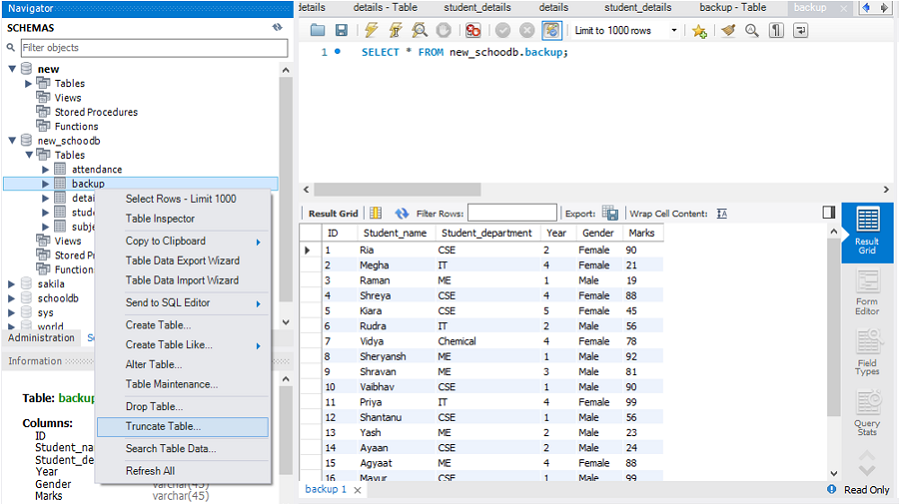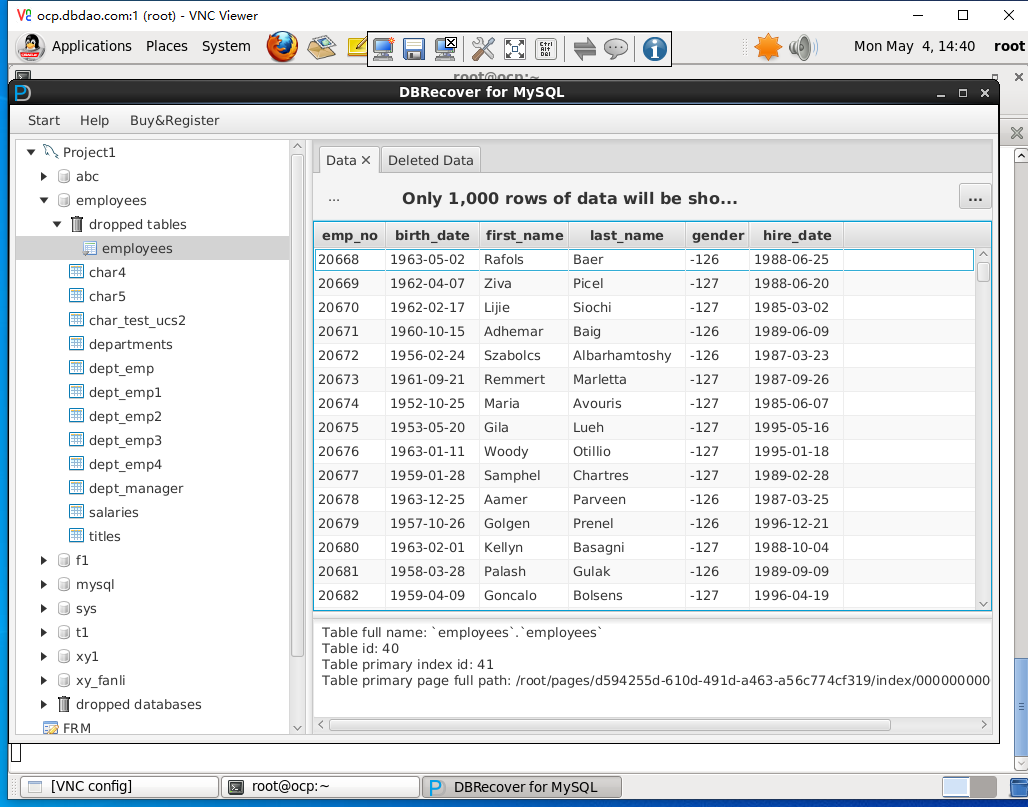

If the delete operation does not use a table lock, the table (heap) will contain many empty pages. For example, empty pages in a heap cannot be deallocated without at least an exclusive (LCK_M_X) table lock. Without exception, zero pages are left in the table.Īfter a DELETE statement is executed, the table can still contain empty pages.

TRUNCATE TABLE always locks the table (including a schema (SCH-M) lock) and page but not each row. When the DELETE statement is executed using a row lock, each row in the table is locked for deletion. TRUNCATE TABLE removes the data by deallocating the data pages used to store the table data and records only the page deallocations in the transaction log.

The DELETE statement removes rows one at a time and records an entry in the transaction log for each deleted row. RemarksĬompared to the DELETE statement, TRUNCATE TABLE has the following advantages: To truncate a partitioned table, the table and indexes must be aligned (partitioned on the same partition function). can be specified as partition numbers separated by the word TO, for example: WITH (PARTITIONS (6 TO 8)) Provide both ranges and individual partitions, for example: WITH (PARTITIONS (2, 4, 6 TO 8))

Provide the partition numbers for several individual partitions separated by commas, for example: WITH (PARTITIONS (1, 5)) Provide the number of a partition, for example: WITH (PARTITIONS (2)) If the WITH PARTITIONS clause is not provided, the entire table will be truncated. If the table is not partitioned, the WITH PARTITIONS argument will generate an error. Specifies the partitions to truncate or from which all rows are removed. WITH ( PARTITIONS ( ) )Īpplies to: SQL Server ( SQL Server 2016 (13.x) through current version) table_name cannot be the OBJECT_ID() function or a variable. Is the name of the table to truncate or from which all rows are removed. Is the name of the schema to which the table belongs. The good news is that the fix itself has been implemented MariaDB 10.2.19, MySQL 8.0.23 and later.To view Transact-SQL syntax for SQL Server 2014 and earlier, see Previous versions documentation.
Mysql truncate table code#
If you have a large code base and don’t explicitly specify the storage engine, you can change the default storage engine to MyISAM by adjusting the following configuration option: You can specify ENGINE=MyISAM in your CREATE TABLE statement. One possible solution can be delete all rows before dropping a table, this will not cause a memory stall because there will be no data in memory.Īnother solution can be use of non-InnoDB storage engine for temporary tables. You can also find more details MySQL troubleshooting article. There is different workaround for this bug depending on your circumstances as you have not shared complete detail so, I am suggesting some. If your buffer pool is 1TB that can mean your entire database locks up for as long as 30 seconds. This bug can come up when you DROP or TRUNCATE a table and you have a large buffer pool, there can be server lock-up or stall of multiple seconds which makes your table unresponsive.ĭepending on the server’s CPU and memory bandwidth, the stall can be as much as 1 second per 32GB of RAM. If you have MySQL 5.1.15 and back, you need DELETE privilege, which my answer covers.įirst of all you should use latest version of MySQL or MariaDB as in these version this bug has been fixed. My answer performs what TRUNCATE TABLE now does. If you have MySQL 5.1.16+, TRUNCATE TABLE requires DROP privilege. This should replicate quickly except for the last statement. You could rename the table so that it is immediately available SET FOREIGN_KEY_CHECKS = 0 ĬREATE TABLE user_engagements_new LIKE user_engagements ĪLTER TABLE user_engagements RENAME user_engagements_zap ĪLTER TABLE user_engagements_new RENAME user_engagements If any uncommitted transactions are holding onto user_engagements, that could potentially hold up a TRUNCATE TABLE as well.
Mysql truncate table full#
Using TRUNCATE TABLE on an InnoDB table requires a full table lock because TRUNCATE TABLE is DDL (Data Definition Language) not DML (Data Manipulation).ĭoing DELETE FROM user_engagements will not help because MVCC info is written to the undo logs in ibdata1, and that can hold up the table from being emptied.


 0 kommentar(er)
0 kommentar(er)
